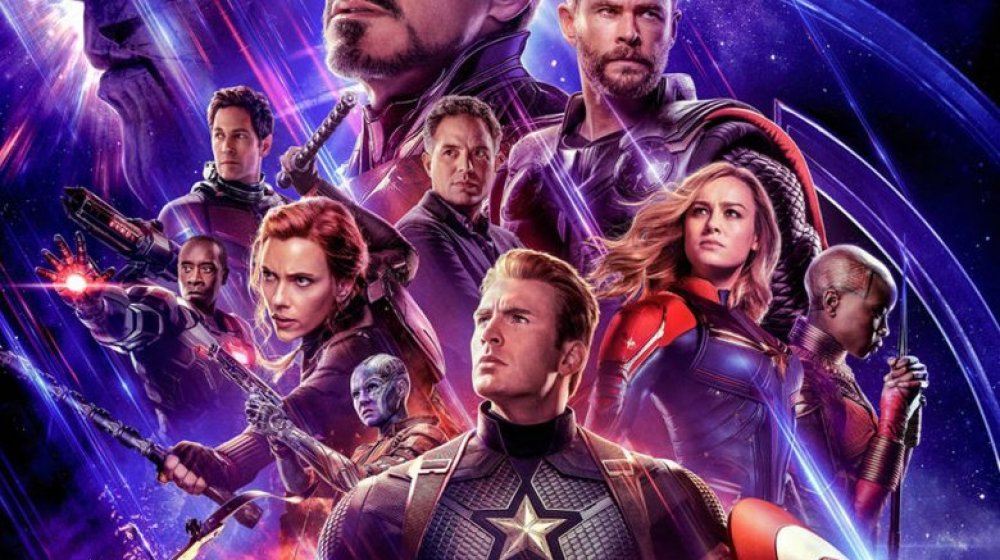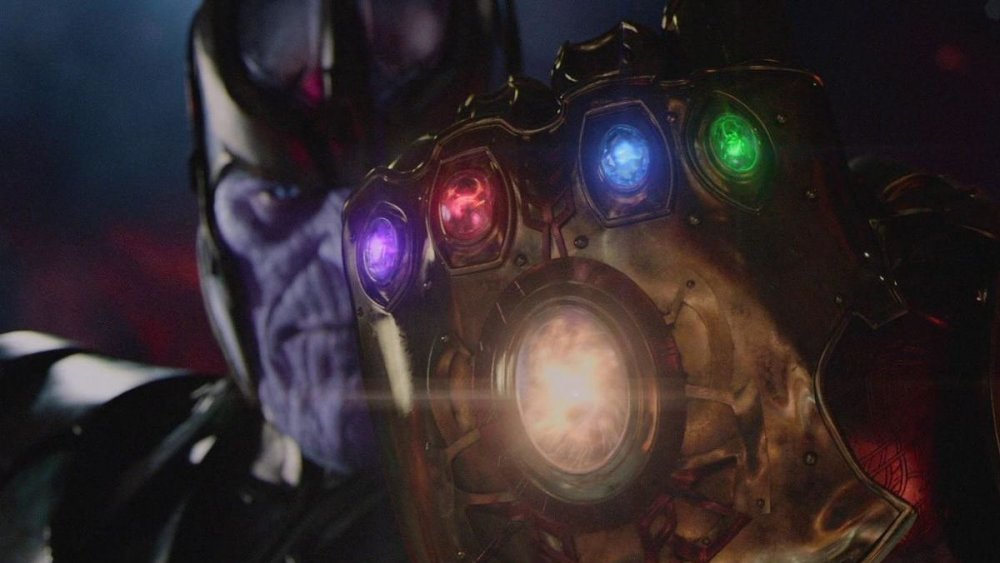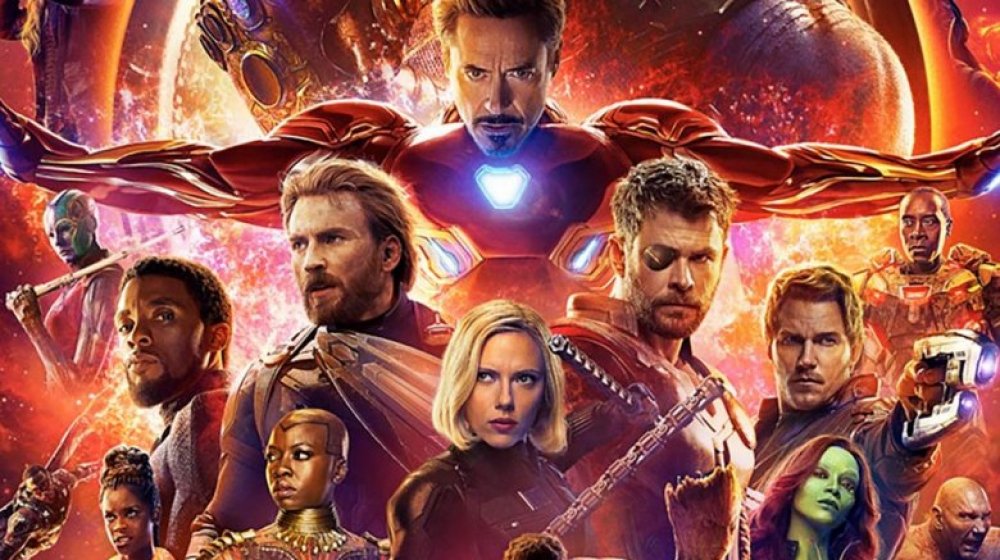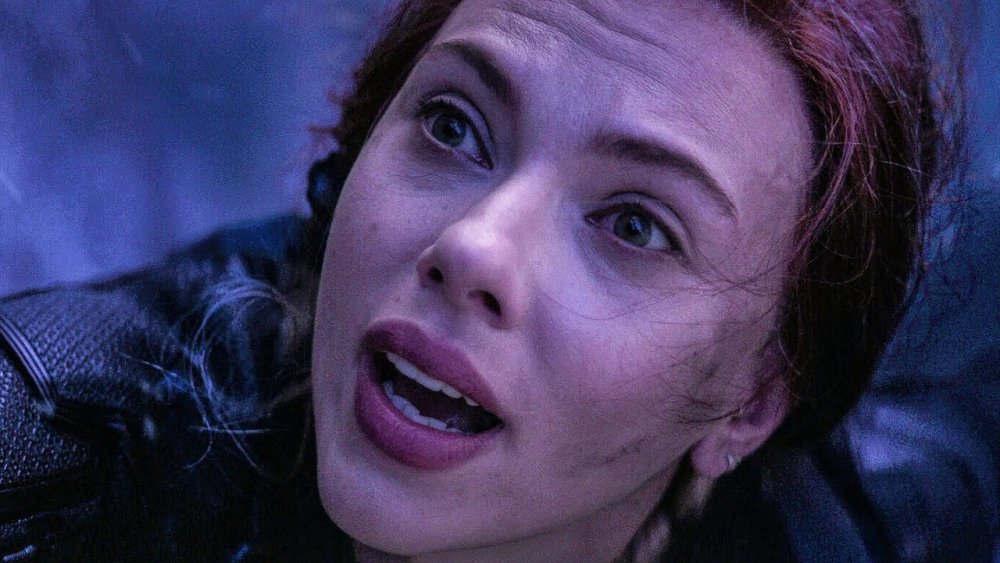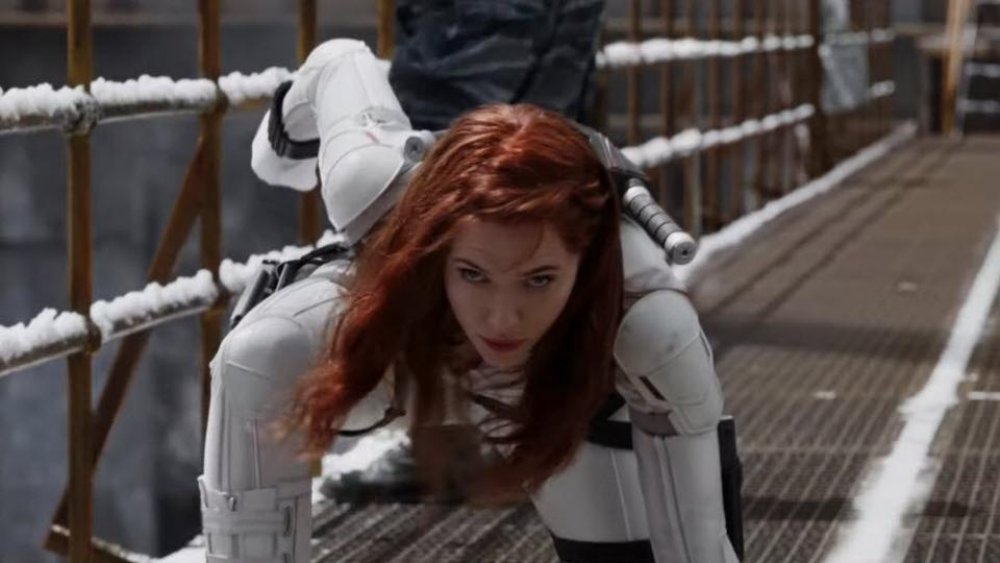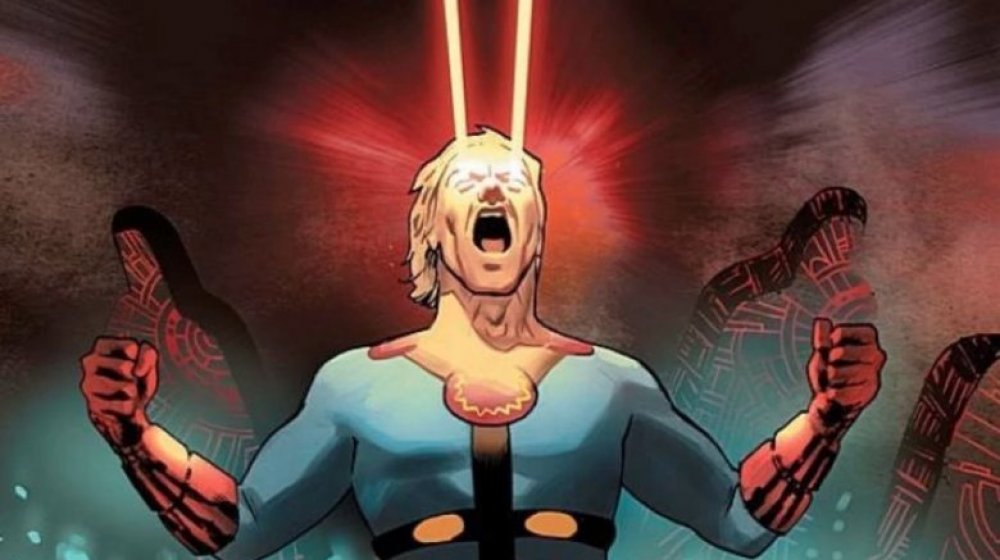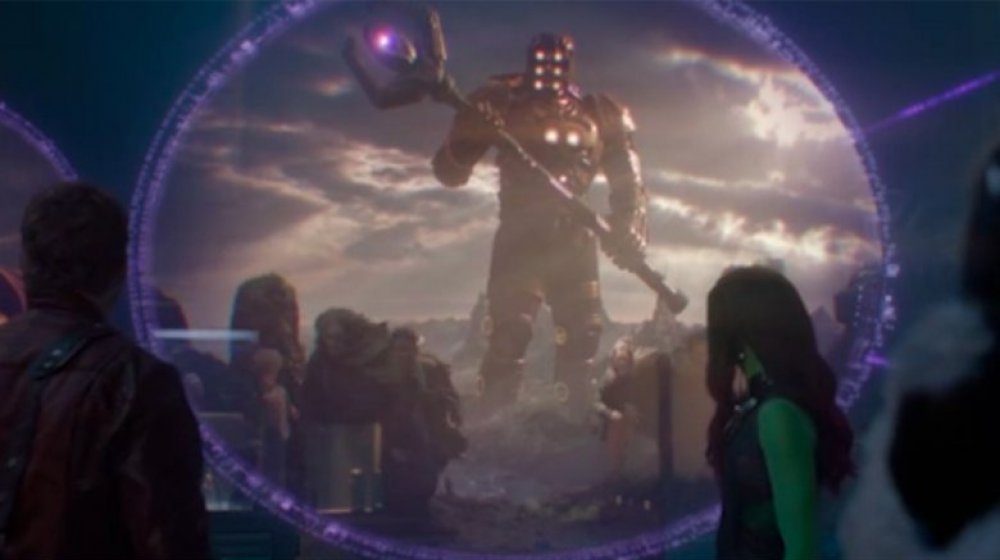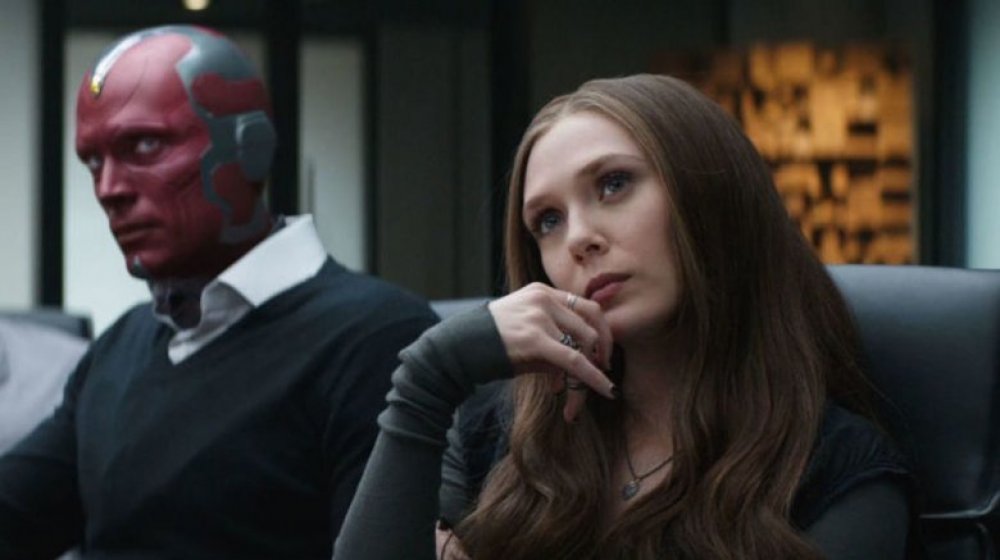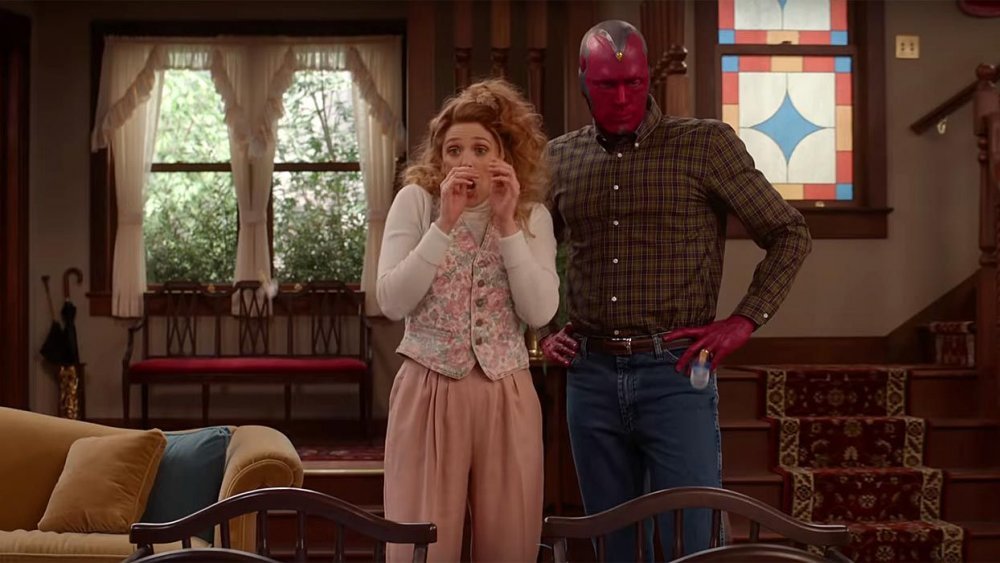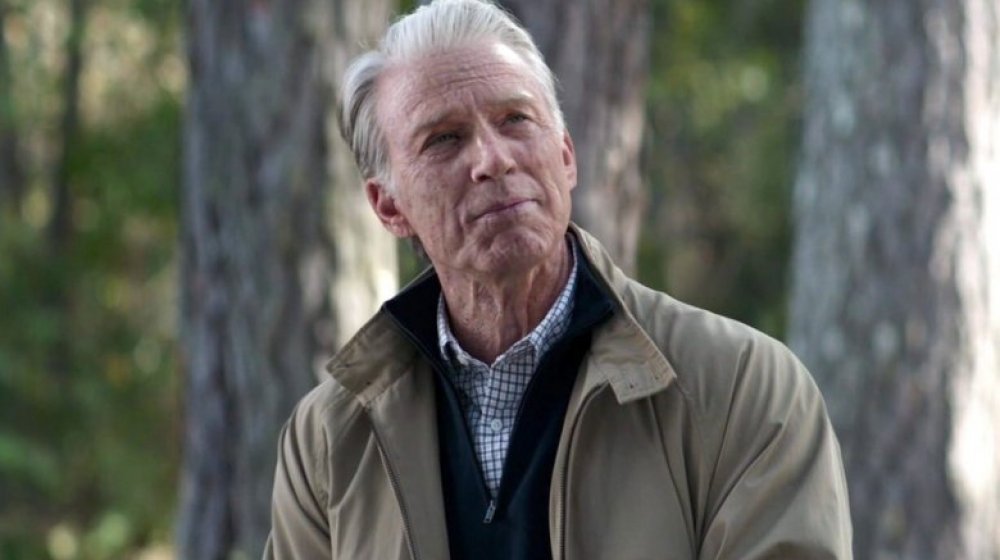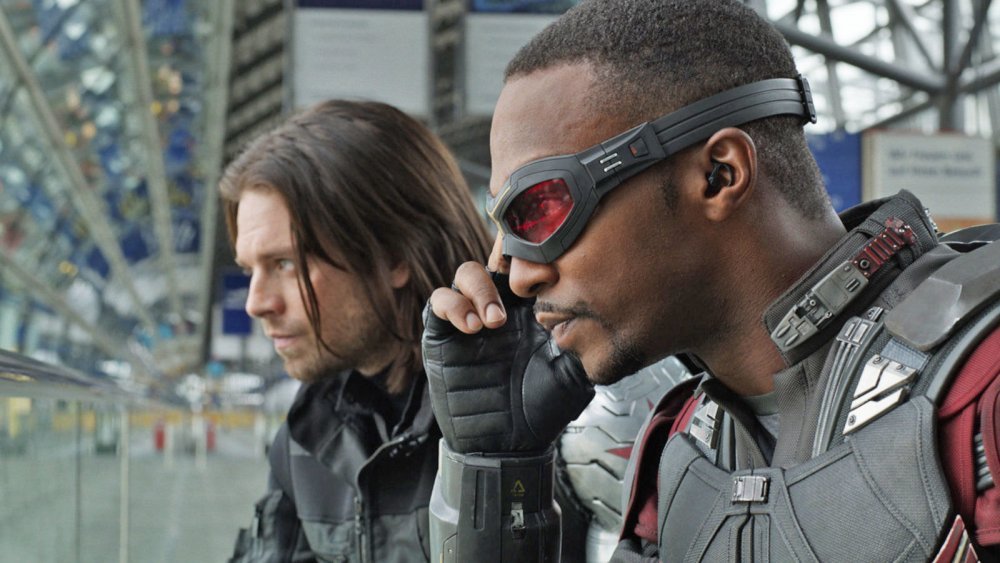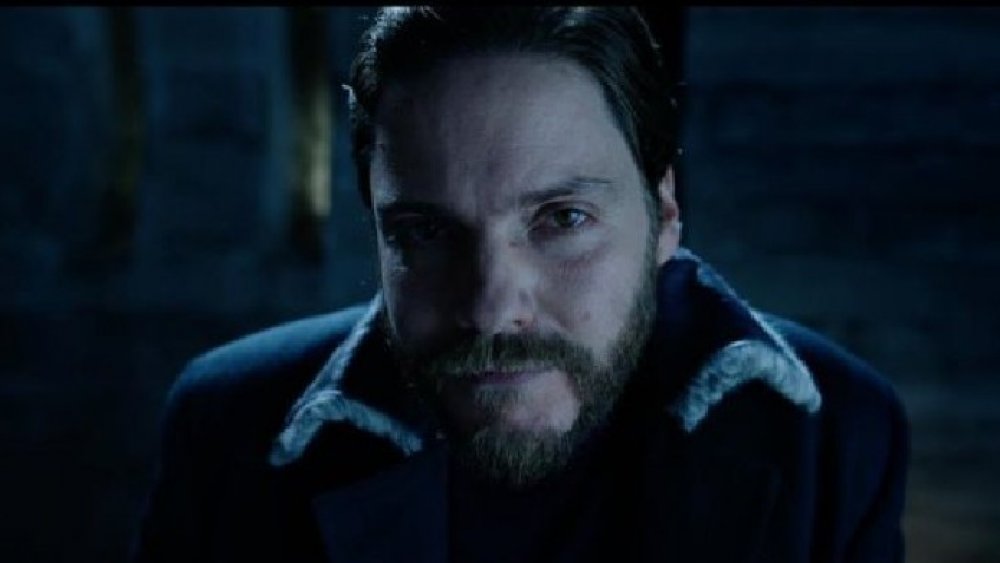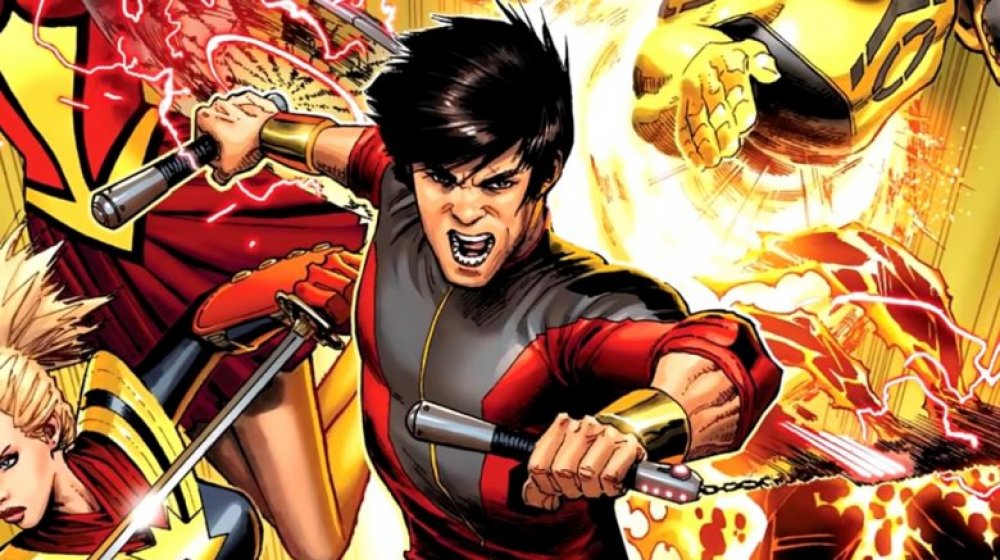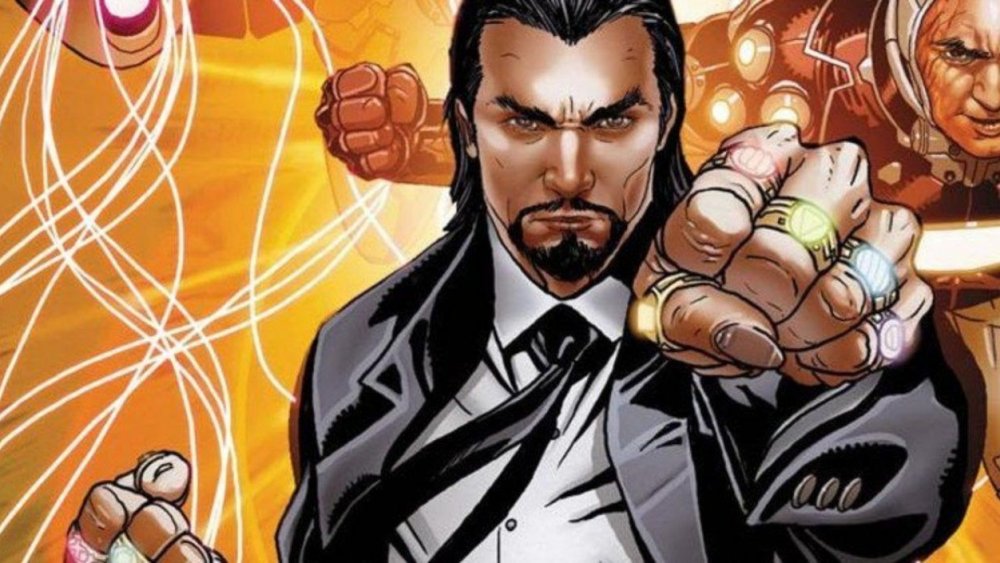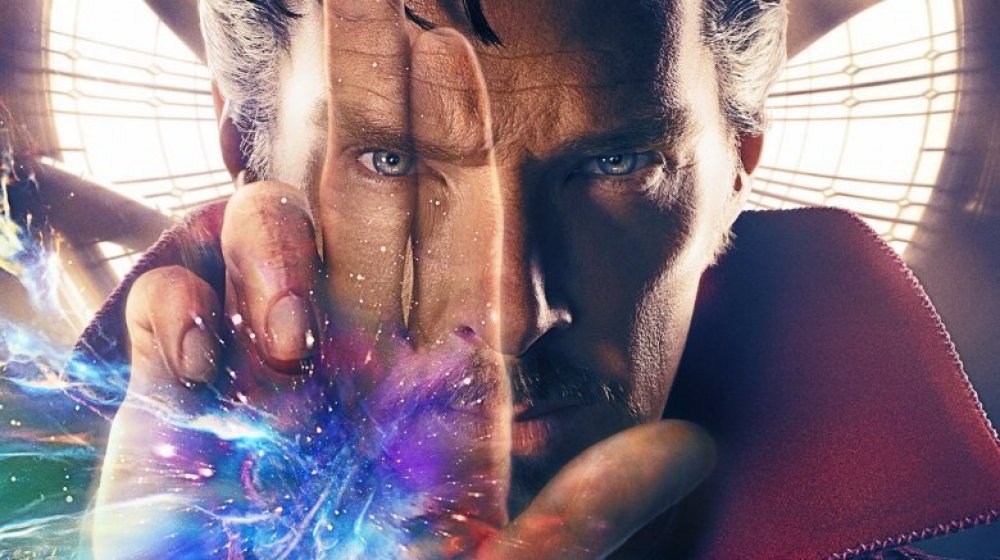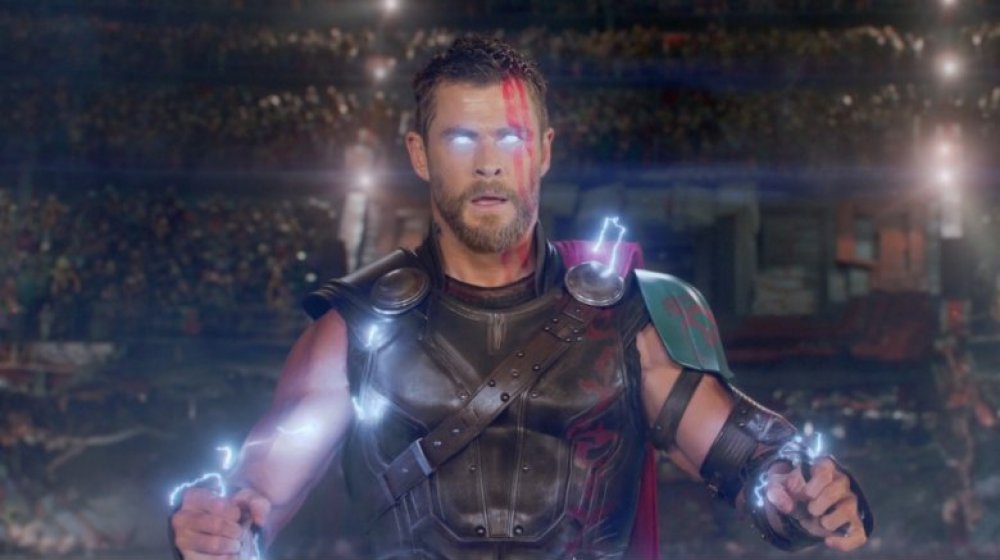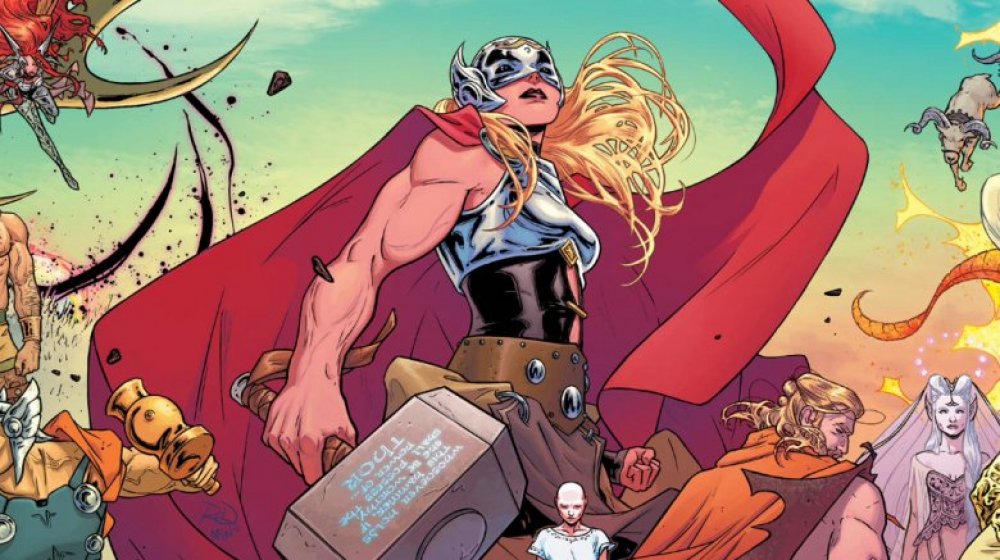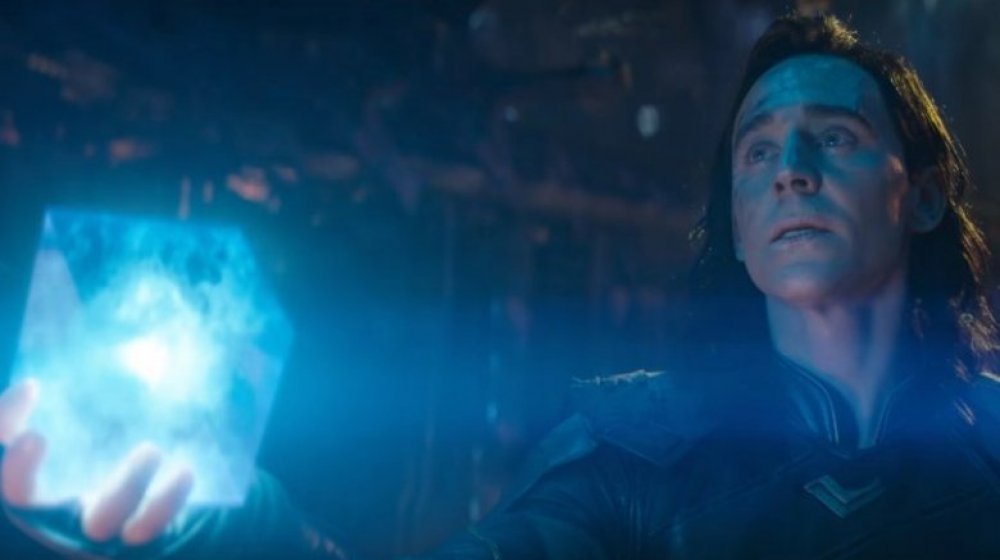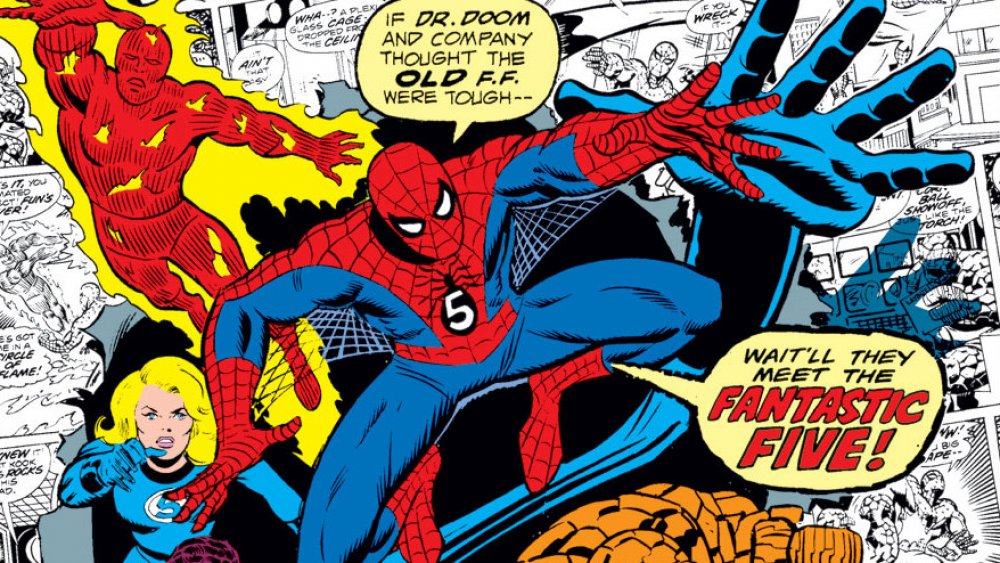Read This Before Marvel Phase 4 Begins
It's kind of tough to believe that the Marvel Cinematic Universe is over a decade old. In spite of more than 20 movies spanning its superhero narrative — not to mention the television series — Marvel's films are still raking in big bucks and more often than not are getting thumbs up from critics and audiences. But with each new Marvel movie and series, the timeline gets longer and potentially that much more difficult for newcomers to penetrate.
Have you resisted the pull of Marvel so far and are finally ready to cave? Maybe you have friends or loved ones obsessed with the comic book flicks and you just want to be able to go to the movies without being confused? Maybe you tuned in early to the MCU and you've missed stuff for the past few years, or maybe you're curious about the comic book origins of some of the characters Phase 4 will introduce to the narrative.
Regardless of why you need a cheat sheet or a refresher, we're here for you. Make sure to read this before watching Marvel's Phase 4.
The Infinity Saga
The first three Phases of Marvel Studios' films — from 2008's Iron Man to 2019's Avengers: Endgame — are part of the Infinity Saga.
The Infinity Stones were created at the moment of the Big Bang, with each stone controlling a specific aspect of the universe — time, space, power, mind, reality, and soul. If all the stones are assembled, their bearer becomes capable of doing just about anything. The villain of the Infinity Saga, Thanos (Josh Brolin), is an already powerful and vicious madman obsessed with the idea of killing half of all living beings in the universe. He seeks the Stones to achieve this goal.
Most of the Stones show up individually as powerful artifacts under different names. In fact, the term "Infinity Stone" isn't even spoken until a mid-credits scene for 2013's Thor: The Dark World. Before Thanos finally begins his quest to gather the Stones — sometime during the events of 2017's Thor: Ragnarok — the Space Stone is in the possession of the mischievous Loki (Tom Hiddelston), the Reality Stone is under the care of the covetous Collector (Benicio Del Toro), Doctor Strange (Benedict Cumberbatch) is warden of the Time Stone, the Power Stone is being guarded by the Nova Corps on the planet Xandar, and the Mind Stone is powering the sentient android Vision (Paul Bettany). The only one of the six we don't see before 2018's Avengers: Infinity War is the Soul Stone.
The final battle with Thanos
The Infinity Saga culminates in 2018's Avengers: Infinity War and its 2019 follow-up, Avengers: Endgame. Thanos already has the Power Stone when Infinity War opens, and one by one he captures the rest. Led to the planet Vormir by his adoptive daughter Gamora (Zoe Saldana), Thanos murders her in order to gain the Soul Stone. He takes the final Stone from Vision in Wakanda, killing the android in the process, and succeeds in his goal of killing half the universe with a single snap of his fingers, including most of the Avengers and Guardians. Moments before he succumbs to Thanos' snap, spymaster Nick Fury (Samuel L. Jackson) sends off a distress signal to the spacefaring hero Captain Marvel (Brie Larson).
Early in Avengers: Endgame, the surviving heroes locate Thanos on a distant planet and attack him, in hopes of getting the Stones from him. Unfortunately, Thanos has already destroyed the Stones and Thor (Chris Hemsworth) murders him in revenge. Five years later, in 2023, the surprise arrival of Ant-Man (Paul Rudd) from the Quantum Realm inspires a plan to gather the Stones from different points in time and use them to bring back the dead. The heroes succeed, but unfortunately the Thanos of 2014 jumps forward in time with his armies. Thankfully the resurrected Avengers and Guardians of the Galaxy arrive in time in time, and Iron Man (Robert Downey Jr.) sacrifices himself to wipe out Thanos and his forces.
Black Widow's sacrifice
Iron Man isn't the only member of the original MCU Avengers lineup to die in Avengers: Endgame. Black Widow (Scarlett Johansson) doesn't survive the film and, like Tony Stark, her sacrifice is her own choice.
In Infinity War, we learn that taking possession of the Soul Stone comes at a cost — a life must be sacrificed in order to get the artifact, which is why Thanos murders Gamora. Tasked with going back to 2014 to get the Soul Stone in Endgame, both Black Widow and Hawkeye (Jeremy Renner) are willing to be the sacrificial lamb. Having become a violent vigilante since his family's death from Thanos' snap, Hawkeye believes he deserves to die. Meanwhile, Black Widow has always wished to redeem herself for her days as an assassin.
The two actually fight over who will die for the Stone — with each racing for the edge of a cliff and trying to stop the other. Ultimately they both wind up on the side of the cliff, with Hawkeye holding on to his best friend. Widow's last words to him are "It's okay" before letting go of him and throwing herself from the cliffside.
Black Widow in her own movie
In spite of the character dying in Avengers: Endgame, Natasha Romanoff will finally be getting a solo film with April 2020's Black Widow. No one will be resurrecting the ex-KGB spy as far as we know. The film is a prequel, set between the events of 2016's Captain America: Civil War and Avengers: Infinity War.
Many of the plot details for Black Widow are still under wraps, but we know something about the heroes and villains joining Natasha. Florence Pugh will play Yelena Belova, a character who for a time took over the mantle of Black Widow in Marvel Comics and has since gone back and forth between hero and villain. David Harbour will play the Red Guardian. Over a half dozen different people have been the Red Guardian in the source material, though Harbour will be playing Alexei Shostakov — the first Red Guardian to appear in the comics (though it was later revealed another Red Guardian fought during World War II).
It seems likely not all the villains have been revealed just yet, but we know one of the major antagonists will be the Taskmaster. In the comics, Taskmaster has the uncanny ability to do just about anything he sees someone else do. For example, if he sees a master marksman like Hawkeye make an insanely difficult shot, he'll be able to instantly make the same shot.
The Eternals
In November 2020, we'll be meeting the Eternals — creation of the late, great Jack Kirby. Based largely on characters of Greco-Roman Myth, the Eternals are a powerful race of heroes created by the godlike Celestials. The Eternals protect Earth, specifically from the villainous Deviants. Kirby's Eternals series was canceled with its 19th issue, though there have been attempts at comic book re-imaginings and revivals of the characters over the years, including a 2006-7 series by author Neil Gaiman and artist John Romita, Jr.
If the films follow the example of the source material, then we've already met one of the Eternals. The Mad Titan himself, Thanos, is an Eternal in the comics. He's the Deviant son of Eternals Mentor and Sui-San, though this wasn't originally the case. Thanos didn't exist in Marvel during Kirby's Eternals, and when the villain's lineage is first revealed in 1973's Captain Marvel #29, he's a descendant not of the Eternals but of the actual gods of Olympus. Like so many things in comics, this was eventually retconned.
Surprisingly, around the same time word of the upcoming Eternals film began to spread, Marvel killed them all off. Their entire race is wiped out in 2018's Avengers #4. For some reason, we have a feeling that isn't going to stick.
The Celestials
While we don't yet know in what ways the movie will diverge from the comics, judging by some promising concept art that was released in July 2019, the Celestials will almost definitely be playing a pivotal role in 2020's Eternals.
The massive Celestials — usually portrayed as giants impossibly walking through space — are some of the first living beings in all of existence. They created the Eternals and their opposites, the Deviants. They're responsible for the genes that allow humans to become mutants like the X-Men, as well as the evolutional potential in humans that allow them to gain superpowers from events that should kill them (e.g. being bathed in gamma rays, or bitten by radioactive animals, etc.). They remain some of the most enigmatic beings in the Marvel Comics mythos, as well as some of the most powerful.
We have already seen some Celestials in the MCU. The spaceport Knowhere that appears in 2014's Guardians of the Galaxy and Avengers: Infinity War is the decapitated head of a Celestial. When the Collector tells the Guardians the history of the Infinity Stones, we catch a shot of a Celestial using the Power Stone to wipe out a race of primitive beings. In 2017's Guardians of the Galaxy Vol. 2, we meet our first living celestial — the villain Ego (Kurt Russell). However, the same character in the comics is not a Celestial, but a sentient planet and the only one of his kind.
The Vision and Scarlet Witch
Later in 2020, WandaVision will be streaming on Disney+. To know why that matters, you need to know about the relationship between these two.
In 2015's Avengers: Age of Ultron, we meet three new Avengers — Vision, Wanda a.k.a. Scarlet Witch (Elizabeth Olsen), and Quicksilver (Aaron Taylor-Johnson). All three owe their abilities to the Mind Stone. Scarlet Witch and Quicksilver's powers are developed by Hydra's research into the Stone, while Vision's android body is given life by the Stone. Quicksilver sadly doesn't survive the movie, and Vision saves Wanda from the chunk of Sokovia falling from the sky.
The next time we see the heroes in 2016's Captain America: Civil War, something is brewing. Vision is increasingly awkward around Wanda, and the pair unfortunately wind up on opposing sides in the conflict. In Infinity War, we see them as a couple in Edinburgh and learn they've been sneaking away together occasionally since Civil War.
At the end of Infinity War, Vision convinces Wanda to use her powers to destroy the Mind Stone — killing Vision in the process — so Thanos can't get ahold of it. Unfortunately, right after Wanda does it, Thanos uses the Time Stone to put Vision and the Mind Stone back together. He physically rips the Stone from Vision's head, killing him again. Since Vision dies before Thanos' genocidal snap, Vision isn't one of the heroes resurrected at the conclusion of Endgame.
WandaVision
WandaVision will premiere in 2020 on Disney+'s streaming service, and we still don't know quite what to expect. We know the android Vision will be in the series, though we don't know how. Judging by the Super Bowl spot featuring shots from WandaVision and other Marvel Disney+ shows, it seems that somehow, the two heroes will be... in sitcoms?
The Super Bowl spot features a lot of what could be simple Easter eggs, or could be hints about major Marvel Comics storylines. One shot, for example, shows Wanda on a staircase wearing a costume much more accurate to her comic book look. More intriguingly, we see a shot where two pacifiers pop up out of cribs in front of the couple — clearly alluding to Vision and Wanda's sons Billy and Tommy who, in the comics, at first existed, then never existed, then totally did exist and... it's confusing. Not to mention the idea of seeing the Vision in an American sitcom setting is reminiscent of the 2015-16 Vision comic by Tom King and Gabriel Hernandez Walta, which finds the android in an idyllic suburb with a family of androids he built himself.
It may also be important to remember that Wanda's powers in the comics and the movies are very different. So far in the MCU, Wanda's been portrayed as a woman with very powerful telekinetic powers. In the comics, her abilities can alter reality itself. It could be that something of what we're seeing in WandaVision is her abilities inching closer to the source material.
Captain America gets his wish
To prep for the upcoming Disney+ original The Falcon and the Winter Soldier, it's important to know Avengers: Endgame ends with the first Avenger getting his dearest wish. With Thanos defeated, Captain America (Chris Evans) is tasked with returning the Infinity Stones back to their proper places in the timestream. The Hulk (Mark Ruffalo) sends Cap back in time, expecting him to return in seconds. Instead, Cap opts to remain in the past with Peggy Carter (Hayley Atwell) and enjoy the simple life. He still reappears, only as an elderly man on a nearby bench. Urged by Bucky (Sebastian Stan), Sam Wilson (Anthony Mackie) approaches his partner and Steve passes his shield on to Sam.
Something like this happened in the source material in 2014. When Steve Rogers had the super soldier serum extracted from him, age caught up with him. Rogers passed the shield to Sam Wilson, who became the new Captain America. Sam kept the name and the shield until after the 2017 line-wide Marvel event Secret Empire.
Some fans wondered why it wasn't Bucky who got the shield since, in the comics, Cap's first sidekick spent time as Captain America before Falcon, but there are plenty of good reasons for Sam to get it instead of Bucky including the latter's checkered past.
The Falcon and the Winter Soldier
Disney+'s The Falcon and The Winter Soldier miniseries is set to be released in fall 2020, with Anthony Mackie and Sebastian Stan reprising their MCU roles.We don't know the whole story yet, but we know a few old friends and foes will be returning. In particular, Daniel Brühl will reprise his role as the vengeful Zemo and Emily VanCamp will appear as Sharon Carter, a.k.a. Agent 13.
One of the more persistent rumors about the miniseries is that regardless of the elderly Steve Rogers' wishes, the US government won't agree with Sam Wilson becoming the new Captain America and will instead tap their own replacement — John Walker, a.k.a. U.S.Agent (Wyatt Russell). The idea comes from an '80s comic book storyline in which the government strips Rogers of his shield and uniform, giving it instead to the more violent Walker.
The Super Bowl TV spot highlighting Marvel's upcoming Disney+ shows seems to at least hint that this is true. In spite of showing Sam Wilson with Cap's shield, we also see John Walker in a Captain America uniform waving to the audience at some kind of big sporting event.
Zemo's Revenge
We don't know exactly what Daniel Brühl's Helmut Zemo will be up to in The Falcon and the Winter Soldier, but we know he'll be in the miniseries and it doesn't seem likely he'll be working on the side of the angels. When last we saw Zemo, he was in CIA custody at the end of Captain America: Civil War.
Helmut Zemo is a former colonel in the armed forces of Sokovia — the same nation that the sentient robot Ultron (James Spader) all but destroys in Avengers: Age of Ultron. Zemo's family is killed in the battle between the Avengers and Ultron's robot army, and most of the events of Civil War are a result of his vengeance. Knowing he can't physically challenge the heroes, he hatches a plan to destroy them from within. Zemo murders King T'Chaka (John Kani) of Wakanda and pins it on Bucky, uses the secret passcode to activate Bucky's mental programming and turn him into a weapon, and does it all to set the Avengers against one another. As a final brilliant stroke, he lures Bucky, Iron Man, and Captain America to a secret base in Siberia where he unveils video proving that it was a Hydra-controlled Bucky who murdered Tony Stark's parents. The reveal sends Stark into a murderous rampage and forces Cap to choose sides between Bucky and Iron Man.
Shang-Chi, Master of Kung Fu
In February 2021, fans will get to see the third of Marvel's Phase 4 films, Shang-Chi and the Legend of the Ten Rings.
Like Iron Fist, Shang-Chi is a character Marvel Comics conceived in the '70s to cash in on the martial arts movie craze. Shang-Chi isn't a mutant and wasn't given powers by stray cosmic rays or any other unlikely accidents. He fights evil with nothing but his skill, determination, and the mastery of his Chi. Shang-Chi dropped off the radar for the most part after the '70s, but his star began rising again in the 2010s. Jonathan Hickman brought the kung fu master on board for his 2013 reworking of Avengers, and more recently he's appeared as one of the members of Agents of Atlas.
We're still largely in the dark about the plot of Shang-Chi. Some rumors have suggested the film will be Marvel's version of a martial arts tournament movie along the lines of Mortal Kombat or Bloodsport. If so, it would be a wonderful opportunity to showcase a whole host of lesser-known martial arts good and bad guys from Marvel's source material.
The Ten Rings
Shang-Chi and the Legend of the Ten Rings promises to bring us a villain who's been hinted at since 2008's Iron Man – before even Thanos showed his purple mug.
In the comics, one of Iron Man's most vicious enemies is the Mandarin — an evil mastermind who possesses ten rings he recovered from an alien spacecraft. Each ring has its own power. One ring can blast an enemy with fire, for example, while another can trap a foe in a block of ice. The Mandarin isn't mentioned by name in Iron Man, but Raza (Faran Tahir) — the terrorist who captures Tony Stark and tries to force him to build him a Jericho missile — belongs to an organization called the Ten Rings. Fans were fooled into thinking Ben Kingsley would be playing the Mandarin in 2013's Iron Man 3, but instead he played dimwitted actor Trevor Slattery, who has been hired to play the famous terrorist by Aldrich Killian (Guy Pearce).
We know that finally, the real Mandarin will be appearing in the upcoming Shang-Chi film, played by Tony Leung. Some rumors suggest in the MCU, the Mandarin will actually be Shang-Chi's father. The idea makes sense. In the comics Shang-Chi is introduced as the son of a villain — Fu Manchu. But both because of IP rights issues and the racist stereotypes associated with Fu Manchu, we almost certainly won't be seeing him in Shang-Chi.
Doctor Strange and the Multiverse
In May 2021, Marvel Studios will bring us Doctor Strange in the Multiverse of Madness. We know few details about the film so far, but the title itself leads to at least a couple of ideas that will likely be central to the plot.
When Doctor Strange premiered in 2016, it became the first MCU film to confirm the narrative existed in a multiverse — in which infinite parallel universes exist, each either a little or a whole lot different from MCU's prime universe based on events big and small unfolding in different ways. The Ancient One (Tilda Swinton) tells Strange this as she sends him on an astral head trip through the cosmos. It's this multiverse that Strange explores in Infinity War when he tells Iron Man he's looked into over 14 million possible outcomes of their battle with Thanos. It's this multiverse the Ancient One and Bruce Banner argue about in Endgame when the former worries that if she gives the Time Stone to Banner, it will splinter her timestream into a parallel universe that will be doomed without the Stone to protect it.
It's only speculation at this point, but what seems like a big possibility is that the Doctor Strange sequel will deal with Endgame fallout. Considering all the time-traveling the Avengers did in Endgame, it's possible that the "Multiverse of Madness" part of the sequel's title refers to damage the heroes inadvertently inflicted while sailing through time.
Ragnarok and beyond
Thor: Love and Thunder is set to hit theaters in November 2021, and to prep for that you may want a refresher on the calamitous events of 2017's Thor: Ragnarok and beyond.
In spite of the humor Ragnarok is known for, Thor suffers tremendous loss between Ragnarok and Endgame. When Odin's (Anthony Hopkins) death triggers the return of the death goddess Hela (Cate Blanchett), the villain proves so powerful she destroys Thor's hammer Mjolnir with one hand. Along with plenty of other Asgardians, she murders Thor's comrades the Warriors Three. To save the surviving Asgardians, Thor and his allies are forced to summon the demonic Surtur, who kills Hela and destroys Asgard. Unfortunately, that's just the beginning. While ferrying the Asgardian refugees to Earth, Thanos and his Black Order attack their ship in the opening moments of Infinity War and murder Heimdall (Idris Elba), Loki, and half the Asgardian refugees.
Thor travels to Nidavellir and convinces the dwarf Eitri (Peter Dinklage) to build him a new hammer, Stormbreaker. After murdering Thanos in Endgame, Thor suffers PTSD and for five years technically rules over the surviving Asgardians on Earth, though really he retreats into drunkenness. After finally emerging from his stupor to help the Avengers, he leaves New Asgard in the care of Valkyrie (Tessa Thompson) and takes to the stars with the Guardians of the Galaxy.
The Mighty Thor
Of what little we know regarding the upcoming Thor: Love and Thunder, one of the most intriguing details is that not only will Natalie Portman's Jane Foster — absent in Ragnarok — return for the Phase 4 film, but at some point she will become the Mighty Thor.
We don't know yet how Foster will become Thor in the movie, but for four years in Marvel Comics, Jane Foster was the Thor. As a result of the 2014 line-wide event Original Sin, the original Thor — who for the next four years would become mainly known as simply "Odinson" — loses his worthiness, and hence his ability to lift Mjolnir. At first her identity is secret, but eventually it's revealed that it's Jane Foster who lifts Mjolnir when Odinson can't.
Foster remains as Marvel's Mighty Thor until 2018's Mighty Thor #705, when she sacrifices her hammer in order to defeat the destructive villain Mangog. While she no longer has the ability to summon lightning, after the 2018-19 event War of the Realms, she's become the new Valkyrie in Valkyrie: Jane Foster.
The death and resurrection of Loki
Sometime in the spring of 2021, the miniseries Loki will premiere on Disney+ starring Tom Hiddleston as the titular god of lies. To understand how that's even possible, we need to take a look back at the last two Avengers films.
In the beginning of Infinity War, Loki is brutally murdered by Thanos. On his way to summon Surtur in Ragnarok, Loki makes sure to swipe the Space Stone from the late Odin's trophy room. Sensing its presence, Thanos and the Black Order attack the Asgardian refugee ship on its way to Earth. With his brother's life threatened by the Mad Titan, Loki hands over the Infinity Stone. Moments later he makes a desperate attempt at Thanos' life, which ends with the Titan choking the life from Loki.
But while this wasn't the same kind of illusion we witnessed when Loki "died" in Thor: The Dark World, Loki was still destined to return. When the Avengers go back in time to the Battle of New York in Endgame in hopes of capturing the Space Stone, a.k.a. the Tesseract, it's a captive Loki who gets his hands on it instead and instantly teleports himself away.
When that happens, a new timeline is created. So while the Loki of the prime MCU timeline is still very much dead, the one we'll be seeing in Loki is from a parallel universe – one in which Loki escaped the Avengers' clutches after the Battle of New York.
Loki, prisoner of the Time Variance Authority
The 2020 Super Bowl Disney+ TV spot focusing on its upcoming Marvel miniseries didn't show much of Loki, but it did give us one interesting detail that a lot of comics fans noticed right away. We see Loki sitting in a dark room, promising "I'm gonna burn this place to the ground." He's wearing a shirt with the acronym T.V.A. on it, which seems likely to be referencing the somewhat obscure fictional organization the Time Variance Authority.
First appearing in 1986's Thor #372, the Time Variance Authority seeks to minimize any changes to the normal flow of time through the multiverse. When they're first introduced, we meet only the very Judge-Dredd-esque Justice Peace, but in later appearances they're shown to be a vast, comically bureaucratic organization. In 1991's Fantastic Four Annual #24, we learn most of the TVA's employees are clones bred to serve the TVA for life and those clones are specifically drawn to resemble Marvel writer and editor Mark Gruenwald.
Considering how Loki's escape in Endgame creates a new parallel timeline, it makes sense the TVA would be involved, and it may be that Loki is their prisoner in the Super Bowl clip.
What If?
What If...? is scheduled for the summer of 2021. The animated series — which will include a lot of actors from the live-action films doing voice work — will cover all of the films from the Infinity Saga, asking what would've happened if things turned out differently. We don't know exactly how different things will be, though early hints point toward a story in which Peggy Carter becomes Captain Britain, one in which T'Challa is somehow Star-Lord, and perhaps even an adaptation of Marvel Zombies – comics featuring the heroes and villains of Marvel as zombies, first written by Walking Dead creator Robert Kirkman.
What If...? is named after an actual comic series which premiered in 1977 and occasionally sees revivals. Each issue of What If...? is narrated by the mysterious figure the Watcher, who explains that the story you're about to read did happen, but in a universe parallel to the prime Marvel reality. For example, 1977's What If...? #1 tells what would've happened if Spider-Man had joined the Fantastic Four shortly after he became a hero.
If the animated series' writers go the same route as the comic book scribes, expect a lot of death. Freed from the constraints of continuity, What If...? writers often take the opportunity to kill off marquee characters. One particularly bloody example is 1984's What If...? #45, when — shortly after his initial transformation — the Hulk kills the Human Torch, the Thing, and Iron Man, only to die himself at Thor's hands.
